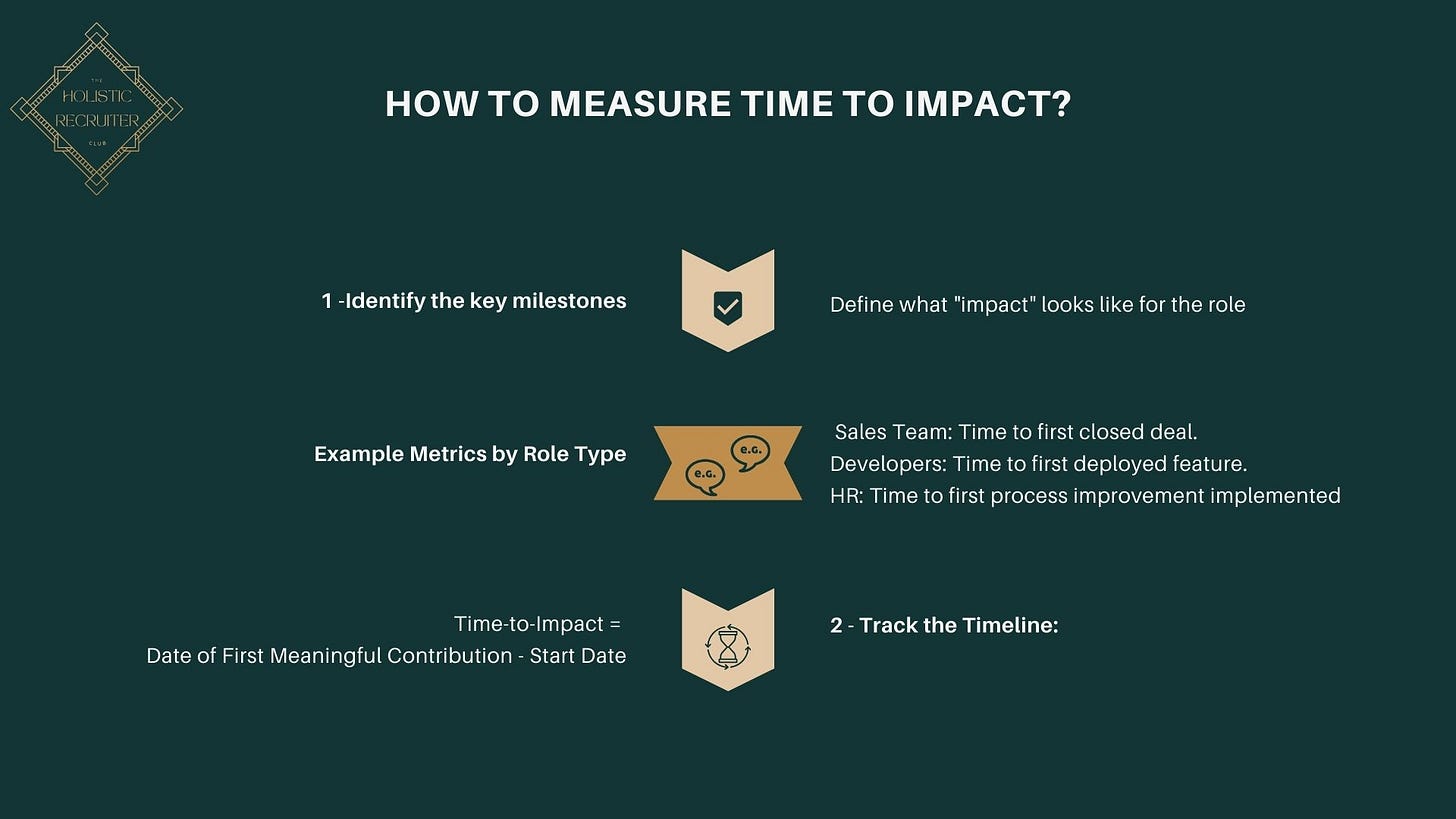This week in the week of the Holistic Recruiter was a BIG one. Here at Presage, we finished the v.0 of our MVP for the TA Data Platform well done to all the hard work
my partner in crime! Thousands of data points from multiple sources are consolidated into one place with never before seen strategic insights into the recruitment department, a Data Reliability score to explain how it can be depended upon to make strategic decisions or not. And with a little sprinkle of AI on top for good measure! Watch this space for more!I learned that doing a video newsletter was not the one, so I am scrapping that for the future! 😅
This week I was invited to discuss on the Coffee with a Recruiter Podcast with Jose Marchena where we discussed data, life and of course the Online Charity Christmas Special you can listen below. And while you are there don’t forget to sign up for the special
Now time to get a bit serious
Why Time-to-Impact Should Be Your Next Strategic Metric to follow.
So what is Time-to-Impact? Well it measures the period between a new hire’s start date and the point at which they make a meaningful contribution to their team.
Why do I think it Matters?
If you can show a faster “Time-to-Impact” it will = quicker “ROI on recruitment efforts”.
It aligns recruitment efforts with business goals as it shows the value of new hires. Which is where we need to be. Not just sharing metrics to justify our jobs.
When done properly it can help you see gaps in onboarding and training.
But how do you actually measure it?
This is where its painful and long but where the deep work is done. You must take the time to identify the metrics!
Where do I store this information?
Good question! Add a field in your ATS
Example Use Case
If a company tracked Time-to-Impact for junior developers and found it averaged 90 days. Then by introducing role-specific onboarding tasks and assigning mentors, they reduced this to 65 days. You could see the direct impact of the initiative. This would likely result in faster delivery timelines for new projects and increased team satisfaction.
Ok that’s great I hear what you think ;) But how the hell am I meant to present this? Well I’m already ahead of you here is
“How to Present to Leadership”
Depending on the frequency of your meetings you can use a chart to compare Time-to-Impact pre and post-improvement efforts. This will also be able to give you a finger on the pulse to understand how initiatives you have taken impact the impact ;)
This will also allow you to make better workforce planning and hiring plans as you will accurately know ramp-up periods.
What do you think about this? Do you want to know more about this?
🎙️ Two Tired Dads Talk Talent & Tech 🎙️
This week,
and I discussed in depth the evolution of the time to impact based on a research paper he found. And we were joined again by Jessie from Stakkd who gave us the latest on what was going on in the world of HR SaaS📺 Watch the full episode here :-
Thank you for reading, I have been experimenting with new ways of doing this so your feedback is always welcome. :)
• 📤 Share this newsletter with a colleague who’s rethinking their HR strategy.
• 💬 What’s one HR challenge you’re tackling this month? Reply and let’s discuss!
• 📩 Stay ahead of the curve—subscribe here for next week’s insights.




